LEADERSHIP IN INTELLIGENT ORGANIZATIONS
Simona Vasilache
Mihaela Cornelia Prejmerean
Chapter 1. PARTICULARITIES OF INTELLIGENT ORGANIZATIONS
1.1. Introduction
Organizational intelligence is defined (Argyris, 1999) as a collective capacity to generate, integrate and apply knowledge. Organizations have a three-dimensional knowledge system (Ståhle and Grönroos, 2000), consisting of a mechanical, an organic and a dynamic dimension. The mechanical, or maintanance axis refers to being able to keep “fit” the knowledge already acquired, preventing, thus, organizational sclerosis. Cohen and Levinthal (1990) prove that innovation takes place easier in organizations with a solid and well-maintained knowledge basis. We may speak about a “liability of the newness” (Hannan and Freeman, 1984), approximated by the risk of innovation, but also about a “liability of senescence” (Barron, West and Hannan, 1994), which is significantly reduced by applying knowledge maintenance. Still, knowledge maintenance contributes to generating predetermined and explicit knowledge, which flows in only one direction (from past to present).
The organic dimension implies an incremental, living organism like, renewal of existing knowledge. Given that life, in itself, is an anti-entropic process, ordering, across generations, the organisms’ functions, organic knowledge creation implies controlled change. The resulted knowledge is tested by experience, and flows in two ways, because the organic recombination, based on inherited, genetic knowledge, is partially reversible. The safeguarding of genetic information, in both living organisms and organizations, allows knowledge conservation, in an increasingly chaotic environment. The dynamic dimension belongs to those organizations operating in highly dynamic contexts, which strive to reduce entropy by innovations. The knowledge flows are chaotic, and the main challenge these organizations face is that of turning intuition, which helps them survive, into an institution, that is, institutionalize tacit knowledge.
An intelligent organization distinguishes from others by its “solvability”, in terms of “buying” knowledge from its employees. Each individual has a basis of tacit knowledge which is larger than the span of concepts he/she can explicitly make use of. Between the two there is a gap which has to be filled by knowledge welding (Bratianu, 2006), a gap similar, in some respects, with the one between invention and innovation. The knowledge transfer within the organization is based on trust, as it happens in the passage from invention to innovation. If no one trusts an idea, it’s not going to be commercially exploited or, anyway, a lag time is likely to interpose between the moment of its creation and the day of its emergence in the public sphere. So, the “market career” of an idea it’s influenced by its capacity to build trust, which is a function of leadership.
Organizations learn because their individuals learn, although the regression relationship, in expressing collective learning as a function of individual efforts is not linear. That’s why leadership, which influences learning at the individual level, becomes a resource and a facilitator of organizational learning. Facilitative leadership in intelligent organizations, the issue which will be addressed to in the study, creates the intelligence-friendly climate, with identifying and artificially, systematically reproducing the spontaneous events which lead to creative knowledge recombination. The employees’ competences are skill-based, rules-based, and knowledge-based (Rasmussen, 1996). The first two categories are operational under certainty conditions, i.e., when the endpoint of the process is clearly known. The knowledge-based competences, which have to be managed by the leader of an intelligent organization, depend on the persons’ mental models, which generate their ability to assess the consequences of their decisions. These models form a layer interposed between the real targets and the targets we perceive, these being, in fact, the targets we are able to accomplish. Intelligence is like sight: you can’t be after something which is too laterally placed for your eyes to see it. So, if you lack the so-called “lateral thinking” (de Bono, 1971), looking at problems from a different (“enlarged”, as compared to the one of the normal sight) angle, you can’t possibly see the solution. In order to harmonize their thinking patterns, according to Habermas (1994), people working together have to share effectively at least one item of knowledge.
In doing so, they superpose different mental images of the world, different layers intermediating the reflection of the real target in the perceived target. When these images interfere, ones being less clear than the others, some of them being smaller, some other larger, the organizational brain is likely to select the most convenient (the clearest, the most accurate, as deduced from the available information), and annihilate the rest. So, in the competition of mental models, the fittest survives. Still, if these images are highly incompatible, no “brain” will be able to process them, and choose the right one. The one who mediates between the team and the world, and makes sure that knowledge-sharing is well-defined, and the mental models have at least some elements in common, is the leader.
The innovative climate, or organization renewal, as component of intellectual capital in an organization (Ståhle and Grönroos, 2000), based on knowledge-sharing, is envisioned by the leader, shared with the followers, and the consequences of shaping it one way and not the other have to be born and managed. If the innovative approach is problem-solving centered, then the organization is committed to single-loop learning (Argyris, 1999), which proves a rather low capacity of intelligence integration. In other words, the idea which will start the innovation process mustn’t wait for a problem whose fixing needs that particular idea, but must anticipate it. Then, after the organization “knows” that an innovation is needed, it has to generate possibilities and to see which would be the best way to follow. Based on this comparison, a selection process takes place, when the organization chooses those ideas which exhibit potential of being successfully applied. The idea or the ideas taken into consideration become subject to the market test. If they fail, the process starts at its beginnings. If they prove ok, then the product is launched and manufactured on a large scale. Of course, this process is not risk-proof. Market tests, as proved by Kotler (1996), reveal precious information to rivals. So, when innovating, there appears a knowledge-drain which parallels the brain-drain from the inside to the outside of the organization. In order to avoid these risks, the organization has to mask its intentions or to perform these preliminary tests in remote markets, where the rivals can’t possibly spot them.
In addition, the practical aspects of integrating innovation may result in blocking it. There lies the skill which distinguishes intelligent organizations from organizations whose staff may be more intelligent than the medium level. An intelligent organization won’t find the triangle marketing-manufacturing-development limiting for its innovating intentions. It does its best to remove organizational barriers (Aaby and Discenza, 1995), and to ensure an adequate flow of ideas between various departments, in such a way that no one takes control over the others. For instance, if marketing is in charge, they will focus on design, employing creativity, and are likely to leave apart the practical aspects taken into account while manufacturing the product.
In this new competitive context, organizations must be able to develop new capabilities and to build flexible structures, thus winning core competences (Hamel, 2002). One of these new and powerful competitive capabilities is organizational intelligence. Approached integrally, it is an emergent research topic having complex connections with organizational knowledge and organizational intellectual capital, contributing to the sense of interdependence between knowledge, intelligence and learning.
1.2. Intelligence Development and Innovation at the Organizational Level
Yet, knowledge and intelligence are different. The first concept refers to the potential of the intellectual capital, while the second concept refers to the capacity of an organization to transform this potential into successful strategies. Glynn (1996) considers that, for an organization to be labeled as intelligent, three broad conditions have to be met: the organization should be a learning organization, a market-driven organization, and an innovative organization. So, organizational intelligence, shaped according to the movements of the market and incorporating relationship capital, is the result of an on-going learning process and closely related to innovation. Weick’s (1990) play upon words, that “an organization is a body of thought thought by thinking thinkers” relates well to the idea of integrating individual and organizational intelligences, in order to generate useful ideas, that is, innovations. Glynn (1996) identifies three types of processes facilitating the passage from individual to organizational intelligence:
• Aggregation models, contributing to the accumulation of individual intelligence and their juxtaposition, in order for the organization to benefit from the maximum value of the individual intelligences scores. Still, this perspective does not account for the variety of intelligences that may be exhibited by people in a group.
• Cross-level effects appear in the process of transferring knowledge inside and outside the organization, by means of roles, technology, social and political influences.
• Distributed effects take into account the systems which are operational in the organizational community, and the knowledge transfers by means of peer to peer relationships.
For an organization to be smarter than its employees, it should be able to institutionalize innovation. According to Slappendel (1996), three perspectives on innovation make an organization succeed. These perspectives are integrated by the learning organization, for it adopts an individualist perspective, then it considers human capital a very important segment of its intellectual capital (Roos and Roos, 1997), afterwards it switches to an organizational perspective, when claiming that know-how resides in structure and that the values and the basic beliefs shared within the organization are knowledge carriers, and finally, enlarges its perspective to an environmental one, accepting that innovation is stimulated by the environment.
In order for an intelligent organization to innovate, it needs a certain configuration of its human capital, besides the permissiveness of its structural capital. In other words, it requires a creator, an implementer and a stabilizer. These persons get to work in three clearly defined stages of the innovation process: unfreezing, changing, and refreezing.
Creators, usually corresponding to the shaper type identified by Dr. Belbin (1985) in the standard team, are too dreamy and preoccupied about their ideas to get involved in the day-to-day practices of the organization. They are future-oriented and tell the organization what it is going to become. They shape a new logic, the one of the never-been-before, of the invented procedure or object the organization will benefit from.
Implementers are practically in charge with change. Once given a chance, they have to take care that this change is effective and that it takes place in the desired direction. Theirs is a second-level creativity, target-oriented, which makes the “pointless”, at the moment at its emergence, invention, find its way in the real, lucrative world.
Stabilizers know that a change wouldn’t last for ever. Once the novelty has been assimilated, they put the organization back in order, and integrate the “new-comer” in the already set paradigm, in such a way that outputs are maximized. Most of the employees in an organization are actually stabilizers, as they exhibit a natural will of finishing with the mess and coming back to the rituals of everyday work.
Innovation implies organizational change, acting upon organizational competencies and cognitive paradigms, as well as upon the mental models and the theories in use (Glynn, 1996). Each creative change, leading to innovation, encompasses two stages:
a. an initiation stage, when the organization perceives the problem to be solved, and performs the first two processes of the knowledge management cycle: knowledge identification (who knows what), and knowledge elicitation (from whom and how can we obtain additional knowledge).
b. an implementation stage, when innovation is encoded, and becomes a must-do practice in the organization. The remaining two processes, knowledge dissemination (how does right knowledge reach right people in the right moment) and knowledge utilization (how is knowledge being used to foster organizational success).
The innovation process is opportunistic, customer-responsive, turbulent and strongly non-linear. Intelligent organizations, able to innovate and to sustain innovation, to make use of it, are curious, but pragmatic, sustaining the tension between knowledge exploration and knowledge exploitation, and the dynamics of the exchange between the stocks and flows of learning (Bontis, Crossan and Hulland, 2002). The flows of learning are both feed-back and feed-forward, directed towards acquiring new knowledge and, at the same time, towards checking what the organization has already learned, and how solid this basis is. A framework of organizational intelligence development, taking into account the individual, group and organization stages of learning, was proposed by Crossan (1999).
(Adapted from Crossan et al., 1999, p. 532)
where I stays for individual intelligence stock, G for group intelligence stock, and O for organizational intelligence stocks. The continuous line symbolizes the feed-forward of group and organizational intelligence by individual intelligence, while the dotted line stays for the feed-back of organizational intelligence on group and individual learning. Intuition belongs to the individuals, being a process included in the tacit knowledge that each of us disposes of. Interpreting is based on intuition, but it is done in groups, in order to decode the insight of one mind for the collective use. Integrating then takes the results obtained in interpreting at the group level and expands them on an organizational scale. Finally, institutionalizing turns learning into an organizational practice and routine.
1.3. Organizational Intelligence – Effect of the Accelerated Learning
To understand organizational intelligence and its importance for the business environment, we have to consider the two perspectives set by Peter Senge (Senge, 1990) and Chris Argyris (Argyris, 1999) in USA, and Ikujiro Nonaka and Hirotaka Takeuchi (Nonaka and Takeuchi, 1995) in Japan. Peter Senge’s vision of a learning organization as a group of people who are continually enhancing their capabilities to create what they want to create has been deeply influential. His book The fifth discipline: The art and practice of the learning organization (1990) has been considered by Harvard Business Review one of the most seminal management books of the past 75 years. According to Peter Senge, learning organizations are organizations where people continually expand their capacity to create the results they truly desire, where new and expansive patterns of thinking are nurtured, where collective aspiration is set free, and where people are continually learning to see the whole together.
Research shows that, while all people have the capacity to learn, the organizational structures in which they have to function are often not permeable to reflection and knowledge creation. Therefore, it is not enough to hire smart people and expect them to spontaneously offer their best to the company. In order to do so, they need the appropriate structures for tacit knowledge integration. The red-tape organization not only lacks preoccupation for creativity stimulation, but blocks it. Furthermore, people may lack the tools and guiding ideas to make sense of the situations they face. Organizations that are continually expanding their capacity to create their future require a fundamental shift of mind among their members. In the view of Peter Senge and his group research at Massachusetts Institute of Technology, USA, the dimension that distinguishes learning from more traditional organizations is the mastery of certain basic disciplines which converge to innovative learning organizations.
These are: system thinking, personal mastery, mental models, building shared vision and team learning. The most important result of their research is that people are agents able to act upon the structures and systems of which they are a part. All these disciplines are, in this way, concerned with a shift of mind from seeing parts to seeing wholes, from seeing people as helpless reactors to seeing them as active participants in shaping their reality, and from reacting to present events to creating the future. Organizational intelligence is based on system thinking, this fifth discipline considered by Senge. It is the conceptual cornerstone that integrates the others, fusing them into a coherent body of theory and practice. Organizational intelligence is not the sum of all workers intelligence. It is an integral result obtained in a given business environment and a contextual management (Menkes, 2005). For instance, in the operational management the stress is put on present time and solutions able to produce improvements in a relatively short time span. However, when viewed in systems terms short-term improvements often involve very significant long-term costs. For example, cutting back on research and design can bring very quick cost savings, but can severely damage the long-term viability of an organization. Developing a long-term thinking becomes a necessity for strategic thinking (Bratianu and Murakawa, 2004; Dess, Lumpkin and Eisner, 2006).
Chris Argyris and his team performed o series of fundamental research on organizational learning and published several books on this subject (Argyris, 1999). Many of his results converge, actually, with those obtained by Peter Senge and his team. The most important contribution to the field is the pattern of double-loop learning. The process of learning can be considered a two-steps approach, consisting of a) identification and b) correction of errors. This bipolar system can be put to work at two different levels. The first one, staying for operationalizing rather then questioning – that is, when something doesn’t match, people in charge with completing a certain task look for alternative solutions of coping with the matter – is problem-solving, or single-loop learning. This is the case whenever people are only after some means of properly controlling their given variables, without analyzing them and their spectra of working values. When they do, and, by critically examining them, they can infer what went wrong and transform their failure into a learning experience which enables them to perform better in the future, they commit themselves to double-loop learning. The structure of the initial variables may be, then, transformed, and as a consequence of this process a shift in the plans and strategies a person or an organization pursues takes place. Thus, whenever an error is detected in the management process and it is corrected without questioning or altering the underlying values of the system (be it individual, group, intergroup, or organizational), the learning has a single-loop structure. It is the case of a problem-solving, where the error is a discrepancy between actual state and the desired state of a certain configuration. Action is taken to reduce this discrepancy by finding a practical solution. The analogy is made with the control systems used in Engineering. Questioning the governing values can be done in a second loop, which becomes a learning loop. Actually, the two decision-making patterns can be developed simultaneously in any organization, if the top management develops the necessary awareness for organizational intelligence. The first loop is used for routine tasks, for day-to-day operations and problem-solving situations, while double-loop learning appears when complex, non-deterministic events from the turbulent external environment require an adaptive organization behavior.
Nick Bontis et al. (2002) designed and tested a model of organizational learning focusing on both stocks and flows of knowledge, considering their passage through three levels: the individual level, the team level and the organization level. Results showed that there is a direct relationship between the mismanagement of the stocks and flows of knowledge and the decline in organizational performance. Personal learning induces organizational learning by the corporate level expansion of mental models, as proved by Bratianu and Murakawa (2004). Studying shared vision effect on strategic management and its relationship with the knowledge management are valuable contributions to organizational intelligence (Dess, Lumpkin and Eisner, 2006). Also, the intellectual bandwidth model, proposed by Nunamaker et al. (2001), provides a framework for conceptualizing the collaborative effort. In order to be properly performed, collaboration needs the fulfillment of four basic conditions (Mowshowitz, 1997):
• Congruent goals
• Resource constraints, inducing a need for sharing
• Shared workspace
• Collaborative culture.
In its turn, collaborative effort is preceded by three preliminary stages:
• Collective effort – all employees are working simultaneously, but each of them on his/her own
• Coordinated effort – employees make individual efforts, but have critical hand-off points
• Concerted effort – no individual efforts, but a well managed synchrony.
The hierarchy of organizational understanding (Davenport and Prusak, 1998) is a key factor in developing intelligence-oriented strategies. This pyramid comprises four levels:
• Data understanding of symbols
• Information understanding of relationships among data
• Knowledge understanding of patterns, processes and contexts
• Judgment understanding of the principles and values resulting in intellectual attitudes.
For Ackoff (1996), data are metal ores, quite devoid of value unless properly assembled into usable forms. Still, one can’t weld ideas the same way metal ores are welded (Bratianu, 2006). Data exists both in the form of useful and non-useful elements, and the organization has to select the needed symbols, and put them together. Collected, and put in a certain relation, these symbols become information. The meaning of data, in its turn, may be useful, or not. Information is static and linear: it tells that data is assembled in a certain way, but it doesn’t tell why is it assembled that way and not the other. Knowledge is information put into patterns, which are predictable and repeatable, and may serve as archetypes for problem-solving. Knowledge, unlike information, is self-contextualizing, because patterns are dynamic, evolving over time. Judgment spreads from the understanding of the fundamental principles underlying intellectual attitudes. In Ackoff’s opinion, the first three levels in the hierarchy contribute to efficiency, while judgment is needed to acquire effectiveness, by dictating the right things to do, the right path to choose. So, judgment is strategic. A system employs judgment whenever it determines possible diagnoses and solutions, based on a collection of jointly stored solutions and problems (Nunamaker, 2002). One can recognize, in this hierarchy, the thinking models applicable to individuals (Bratianu and Murakawa, 2004), which can be adapted, as before, at the organizational level.
For an organization to create knowledge, it needs to have sufficient intellectual bandwidth, a variable which depends on several factors. First, there comes its ability to discover new paths to problem-solving and to understand their way of functioning. Then, the ability to create, sustain and change, whenever necessary, its patterns of collaboration in problem-solving. The intellectual bandwidth is some sort of Cartesian product of the two. Information assimilation measures the mental effort which should be done by the members of the organization in order to find and select relevant information from piles of data. Associated with the collaborative pattern, the information assimilation capacity of an organization, mirrored in its intellectual bandwidth, obviously exceeds the information assimilation power of any individual in the organization.
One of the great issues in organizational understanding, which has to be strategically addressed to, is the capitalization of tacit knowledge. By converting their intellectual resources into a chain of services, organizations actually become able to “sell” the skills and the intellects of their employees to their customers, and this ability to transfer knowledge for good profits is, in fact, the ultimate challenge. Intellectual capital names precisely the knowledge an organization is capable to turn into profit, in order to reach the competitive edge.
Knowledge is often highly distributed (Zack, 1999) and, more than that, the distributed knowledge is highly personalized, residing in individuals, and hard to access, as it is stored in the pockets and communities formed inside and outside the organization. Personalized knowledge is idiosyncratic, experiential, and can be “extracted”, in an analogous way with honey extraction from honeycombs, from the mental models of the individuals, in order to be assembled in a corporate mental model. A mature intelligent organization, having devised such a model, and being able to turn its intellectual capital (knowledge residing within the organization) into effective knowledge, which can be “traded” on knowledge markets, is sustained by two pillars (Wiig, 1993):
1. The ability to categorize, analyze, codify and organize knowledge: knowledge repositories and knowledge maps;
2. The ability to appraise and evaluate knowledge value: constant revision of the knowledge stocked in the organization.
The way to codify and understand knowledge becomes embedded in the processes of the organization. The maturity of the intelligent organization becomes visible, in its turn, at three levels: data maturity, collaborative maturity, and process maturity.
Data maturity is that degree of organizational understanding enabling the organization to extract the proper value from the given amount of data. It is a stage in the organization’s transition from the data understanding level to the judgment understanding level, a stage which should be placed as close as possible to the second method of understanding. Collaborative maturity allows the organization to obtain better results by collaboration among its members, implying knowledge sharing. Process maturity comprises five levels:
• Initial – organizational processes are similar to natural, ad-hoc processes, without any well-defined structure, so the success of the process is assured only by individual efforts;
• Repeatable – this stage corresponds to single-loop learning (Argyris, 1999), i.e., the organization found a solution which proved successful in certain circumstances, and applies it whenever meeting similar situations.
• Defined – standard is being set for the process, so that the same method can be applied all over the organization.
• Managed – metrics are collected, to see how well the planned process develops.
• Optimized – the organization uses feed-back and innovation to continually improve its processes, that is, commits itself to double-loop learning (Argyris, 1999).
Collaboration and innovation are brought together in the form of knowledge networks, tying members, tasks and tools. Members are the human capital of the organization, tools form the technical element, and tasks reflect the organizational goals and purposes. By combining these three pillars, three main types of networks are obtained (McGrath and Argote, 2000):
• Social – member to member
• Sequence of routines – task to task
• Technology combinations – tool to tool.
Knowledge stored in each of these compartments, in order to avoid pigeonholing, adopting Mintzberg’s terminology, has to be adequately integrated by the aforementioned facilitative leadership, to adjust the networks as to stimulate knowledge flows.
An organization is intelligent when it can combine its resources applying an algorithm with the “anytime” property, meaning that an acceptable solution is, at any moment, available for use (Body and Dean, 1984). The intelligence of an organization, applying a genetic analogy, is the ability to combine “light chains” (explicit knowledge, as defined by Nonaka and Takeuchi, 1995) with “heavy chains” (tacit knowledge) in a crossing-over process. In other words, the intelligent organization must identify the breaking regions, where the linear flux of explicit knowledge is interrupted, allowing for its combination with tacit knowledge. Intelligence is the capacity to multiply these regions, that is, to creatively recombine knowledge resources.
1.4. Assessing Organizational Intelligence
In order to assess the suitability of the organization for the leaning process, and its intelligence coefficient, seven factors have to be monitored: strategic vision, shared fate, change orientation, heart and soul, alignment, knowledge deployment, and performance pressure (Prejmerean and Vasilache, 2007, work in progress).
For strategic vision, the matters in focus are:
• The “strategic conversation” in the organization – plus or minus.
• The environmental scanning – plus or minus.
• Annual strategic review – present or absent.
• Value proposition – plus or minus.
• Statement of direction – present or absent.
• Correlation between statement of direction and key decisions – present or absent.
• Leaders’ identification and promotion – plus or minus.
Similarly, for shared fate, other seven questions have to be addressed to:
• Plans and priorities sharing between management and employees – present or absent.
• Understanding of the organizational idea throughout the organization – plus or minus.
• Information sharing across departments – plus or minus.
• Sense or belonging – plus or minus.
• Employees – management partnership – present or absent.
• Employees’ belief in the organization success – plus or minus.
• Projected long lasting relationship with the organization – plus or minus.
Change orientation is accounted for by:
• Issuance of new university services to keep up with the demand – plus or minus.
• Natural mechanisms to encourage innovation – present or absent.
• Employees’ stimulation to find creative ways to better do their jobs – plus or minus.
• Permission to question the habitual way of getting things done – plus or minus.
• Bureaucracy – plus or minus.
• Willingness of the management to admit their mistakes and to cancel non-working strategies – plus or minus.
• Openness – plus or minus.
“Heart and Soul” measures commitment in terms of:
• Overall quality of work life, as perceived by the employees – plus or minus.
• Management’s interests as perceived by the employees – plus or minus.
• Pride taken in belonging to the organization – plus or minus.
• Willingness, from the part of the employees, to spend extra effort to build organizational success – present or absent.
• Optimism regarding the future of employees’ career in the organization – plus or minus.
• Management commitment – present or absent.
• Perception of managers as role models – plus or minus.
Alignment shows:
• Organizational structure appropriateness to the mission – plus or minus.
• Sense-making of rules and policies, as compared to priorities – plus or minus.
• Facilitation of employee performance – present or absent.
• Information systems as facilitators – plus or minus.
• Value creation – plus or minus.
• Authority delegation – plus or minus.
• Alignment of departments missions, as to facilitate cooperation – present or absent.
Knowledge deployment is expressed by:
• Cultural processes of knowledge sharing – present or absent.
• Managers’ respect for employees’ knowledge skills – plus or minus.
• Porous organizational boundaries – plus or minus.
• Information systems knowledge flows support – plus or minus.
• Continuous study of the new tendencies at the managerial level – present or absent.
• Continuous learning programs support – present or absent.
• Accurate appreciation of employees’ tacit knowledge – plus or minus.
Performance pressure takes into account:
• Clear understanding of roles and responsibilities, at all levels – present or absent.
• On-going communication of performance goals and expectations – present or absent.
• Replacement of poorly performing employees – present or absent.
• Removal of failing managers – present or absent.
• Feedback to employees and recognition of their contributions – plus or minus.
• Employees’ perception that their work contributes to the organization’s success – plus or minus.
• Employees’ perception that their career success is determined by their job performance – plus or minus.
Performance pressure, in a society “of excellence” (Lyotard, 2004), where performance is the main legitimating factor, reflects an organization’s capacity to shift demand in its favour. Demand, in its turn, is influenced by the marketing and the R&D expenses of the company. Thus, intelligence creation operates both externally, by means of relationship management, and internally, by generating the technological advantage (Yang, 2004). Paap (1997) proposed a matrix of the sources of R&D intelligence, that we adapted as follows:
Figure 2. Sources of R&D Intelligence
Kohli and Jaworski (1990) list as the first element in market orientation the market intelligence generation. The main sources of market intelligence are:
• databases, for relevant indicators regarding companies operating in the field
• opinion leaders, who are trend-setters for that particular domain, and who may be consulted as far as the feasibility of an innovation is concerned
• informal contacts – keeping the channels open for information flows
• industry associations, universities (especially when they suit the entrepreneurial paradigm, as defined by Clark, 1998)
• horizontal (with complementary companies on the market) and vertical (licensing agreement with large, marketing skilled companies) alliances.
The seven elements listed above are principles of the intelligent organization, a composed competitive advantage allowing it to perform better than firms lacking this architecture do. Synthetically, the organizational synergy behind intelligence is reflected in Figure 3.
Figure 3. The Architecture of the Intelligent Organization
The triad achieve purpose – cope with environment – mobilize resources is a function of team-learning. By team-learning the organization becomes a rhizome-like system (as defined by Deleuze and Guattari, 1987), whose relationships with the context are diffuse, and which forms connections spontaneously, relying not only on existing, but also on potential knowledge. Margaret Schneider (2002) advances also the concept of radix organization, anchored in the value chain, and taking its intelligence from there. By combining the two views, we add some other radices to organizational intelligence, these being organizational culture and leadership.
Organizational culture can be seen as an organization’s “personality”, whose relationship with intelligence was thoroughly theorized in individuals. For José Antonio Marina (2004), personality can contribute to the success or failure of intelligence, because it brings about emotional traits, irrationality, safety anchors which prevent individuals from taking risks, even if their intelligent calculus proves that risk-taken to be profitable, inertial mechanisms, etc. Marina defines social intelligence as the sum of the individual intelligences, corroborated with the systems of interaction and with power distribution. Organizational culture accounts for the systems of interaction, while leadership governs power distribution.
The dynamics of every organization is, at the same time, centripetal and centrifugal. Committed to the same organizational culture, people tend to be on the one hand collectivist, on the other individualist. Excellence, in itself, can be interpreted as the performance of the egotists, or as the successful common effort towards accomplishing a common goal. In order to harmonize these contradicting energies, intelligent organizations need to include, in their cultures, five elements (Wagner-Marsh and Conley, 1999):
• Strong sense of purpose – why is the organization in place?
• Preoccupation for individual development – what do the employees want to become and how the organization supports them to get there?
• Openness and trust – mistakes are inherent, and have to be admitted, the focus is not on hiding them, but on preventing, curing and, if possible, never repeating them.
• Empowerment – employee learning and employee decision-making are promoted, in order to stimulate employee responsibility and commitment. If the employees recognize themselves, and their individual objectives, in the vision shaped for the company, and in the organizational objectives, they are likely to contribute with increased efforts to the organization’s success.
• Allowance for employees’ emotions – intelligent organizations let their people be themselves, act spontaneously, behave creatively, express their moods.
These prescriptions for an intelligent culture constitute favourable conditions for organizational intelligence to emerge. Successful organizational culture is some sort of hologram, where every individual becomes a micro-scale representation of the macro-scale “mind” of the organization. The challenge of creating and maintaining an intelligent culture is the one of being able to shape a common ground but, knowing that homogeneity is intellectual death, and that consensus, according to Lyotard (2004), has grown into a suspect value, to encourage, at the same time, creative difference.
This idea, of balance, remains operational also in the matter of choosing between transactional and transformational leadership. If there is the temptation to say that, for organizational learning, transformational leadership would be the only valid path, in literature (Vera and Crossan, 2004), a combined leadership style is recommended, given that, in some circumstances, organizational learning is stimulated by transactional leadership, and in some other, by transformational leadership. The choice between the two styles depends on the external context the organization finds itself in. While operating in stable contexts, organizational learning is a function of transactional leadership, whereas in circumstances of change, when current learning patterns have to be re-dimensioned to cope with environmental turbulences, transformational leadership can handle this restructuring. The “navigation map” , relying either on transactional, or on transformational leadership, makes the skillfulness of the leader which, in relation to the specific circumstances of intelligent organizations, will be addressed to in the second part of the study.
Chapter 2. THE LEADER’S STRATEGIC ROLE IN CREATING ORGANIZATIONAL INTELLIGENCE
2.1. Strategic Leadership
Leadership impacts on organizational intelligence in two ways: on the one hand, by removing organizational barriers and, on the other, by stimulating organizational learning (Vera and Crossan, 2004). In order to increase the intelligence stocks and the learning flows within the organization, a strategic leadership (Bontis, 2000) is needed. From the behavioural point of view, proposed by Lewin et al. (1960), in what became the best known typology of leadership, strategic leadership needs to be a democratic process. While autocratic leadership simply assigns tasks that have to be performed by the “limbs”, the “terminals” of the central brain, democratic leadership is relationship-oriented, aiming to find communicational channels among equally potent, at least in theory, intelligences. The pictures below (adapted from Bratianu, Vasilache and Jianu, 2006) illustrate, comparatively, the two styles:
Figure 4. Autocratic Leadership
Figure 5. Democratic Leadership
Strategic leadership is also an emotionally intelligent leadership, as defined by Goleman (1998). The VANE analysis of the leader should reveal, in case of strategic leadership, values and attitude consistent with those of the organization, while needs and expectations should express their capacity to contextualize behaviours, to separate short-term gaps, which can be operatively filled, from long-term intellectual liabilities (Caddy, 2001), which ask for strategic actions to “audit” the internal environment of the organization, to scan and monitor the external one, and to see where is the disjunction between what the organization has and what the organization does, between stocked intelligence and the execution program working on that intelligence.
Strategic leadership enhances the individuals’ need for relational knowledge (Smith and McKeen, 2004). Relational knowledge implies knowledge exchange which, in Molm’s (2001) view, requires the presence of four elements: the actors of the exchange, the exchanged resource(s), the structure of the exchange and the exchange processes. The relationships exchange actors establish with each other vary from the temporary ones – an accidental knowledge exchange taking place in some particular circumstances (the answer to a question, a journal you browse through en passage, an information, not from your area of interest, which reaches you at a certain moment, etc.), to very solid relationships, leading to the communities of practice formation (Spender, 2002). Communities of practice stimulate systematic knowledge exchanges, and their existence is based (Wenger et al., 2002) on three pillars: precise delimitation of a knowledge domain, formation of a group of persons interested in that domain, and elaboration of a code of practice shared by all the members of the group. In the communities of practice, the role of leadership resides in equilibrating the phases of the SECI model of knowledge transfer within the group (Nonaka et al., 2000), and in choosing the most suitable type of transformation, considering the given context. Human reason was seen as a dispatcher (Nagel, 1998), mediating between what might be done and what can be done. Leadership has the same role, of offering guidance ( by its transactional side, which institutionalizes learning procedures), and of stimulating changes for better (transformational leadership). Organizational culture tells stories. Leadership tells the same stories, but in the manner of the secondary tradition, as defined by Popper (1993): I tell you a story, and you have to think to it, and to tell me back what you think of it. Maybe you can come up with a different story.
2.2. Leadership Influence on Learning Flows and Stocks
Feed-forward learning in organizations starts from individual intuitions, which are to be integrated and then institutionalized as group and organizational learning. Transformational leadership, as a promoter of organizational change, stimulates individuals to be inquisitive, to come up with ideas, encouraging no that much the intelligent, but the creative thinking model (Bratianu and Murakawa, 2004). Creative thinking is a productive thinking, which generates a large number of varied, unusual and value-adding ideas. As Boden (2001) says, “creativity in general is the ability to come up with new ideas that are surprising yet intelligible, and also valuable in some way”. Creative individuals are stimulated by the leader to take intelligent risks, and to develop new paths not only in respect to what was in the organization before, but also as compared to their previous ways of thinking. Creativity may be:
• Combinational, based on analogies
• Explorational, challenging the limits of the rules, e.g. improvising
• Transformational, violating the existing rules, like in, for instance, non-Euclidian geometry.
But, if leaders divide answers to organizational problems in “right” and “wrong”, this creative potential will never be unleashed. Also, if they don’t take the time to experiment, and to organize questioning sessions, people will lose their interest in playing this sort of “game”. Leaders should be promoters of the freedom of expression, and of the idea that the course of the organization is at no moment predetermined, and the opinion of each employee really has the force to change something, and that change is directly useful to the employee himself/ herself.
If we look at the organization through the Johari window (Luft and Ingham, 1955), then transformational leaders are the ones dragging the Blind Spot and the Unknown into the Arena. By stimulating the climate of trust and cooperation, transformational leaders reduce the dimensions of the façade, creating a sense of sharedness, because the employees’ abilities are not competing (as a leadership by rewards may suggest), but complementary, and they have to be known in order to be matched. Also, the emotional intelligence of the leaders is responsible for making people believe that organizational problems can be openly discussed (Goleman et al., 2001), and that their contribution to these problems’ solving matters.
Transformational leadership not only involves a individual to organization learning flow, but also the relationship between group and organizational learning. People are likely to get together in informally constituted groups, which tend to be stronger than the tasks forces assigned by their managers. The leader has to create a sense of inclusion, by making people think that their priorities and selective affinities are part of the organizational strategy, that they can participate, even in the form of spontaneously constituted teams, in the decision-making process. Ideas generated by employees, in the form of “ideas boxes”, or brainstorming sessions, have to be really put into practice by a wise leadership, because if they are theoretically accepted, but practically void of effects (the case of university leadership, analyzed in the case study, is relevant), people stop expressing ideas, they’d rather keep their creativity for themselves, or use it for rumours and gossips, thus alimenting the grapevine.
For instance, if lower levels in the hierarchy are “trained” not to report unpleasant facts and figures, because the reaction of the leadership is to punish them without analyzing the causes of this poor performance, this will create a climate of hypocrisy and, in time, people will become unaware of the real level of performance.
Feed-back learning flows from the organizational routines and institutionalized forms of learning towards individuals and groups. The “organizational memory” (Walsh and Ungson, 1991) helps new-comers integrate and prevents the organization from reinventing the wheel, from spending time in finding solutions that were already successfully used in the past.
The challenge for feed-back learning is to avoid organizational amnesia (Conklin, 2001), the natural tendency organizations have to forget. Organizational amnesia can occur because of time factors and of space factors. Organizational amnesia appearing in time refers to the situation when solutions to old problems are lost because some people leave the organization, and the renewed organization forgets the way particular situations were previously solved, and has to reinvent solutions, which is often a waste of resources.
So, transformational leadership challenges the routines of organizational learning, while transactional leadership helps them settle. Transformational leadership is responsible for the unfreezing state, while transactional leadership occurs in the freezing back level of organizational development.
As far as the relationship between leadership and the stocks of learning is concerned, transformational leadership shapes change-oriented environments, where people double-loop learn (Argyris, 1999), and failures are approached intelligently, as sources of personal and organizational experience. Transformational leadership recognizes both the knowledge needs and the knowledge skills of the employees, creating possibilities for lifelong learning and continuous improvement, stimulating the consideration of debatable issues and regarding the daily tasks as learning activities. Tasks are seen as highly significant and challenging, and their intrinsic complexity motivates the employees to fulfill them. This is, in fact, the principle of “swarm intelligence” (Bassler, 2002; Ball, 2004), the collective intelligence of decentralized task completion. The long-ago defined concept of stygmergy (Grassé, 1959) stays for this form of auto-organizing for accomplishing a goal which is seen as motivating in itself. In organizations, stygmergy can be reached if there exists a systems thinking (Senge, 1990), and a sharedness of vision (Albrecht, 2002). In this case, the collective intelligence coefficient will exceed the linear sum of individual intelligences coefficients, due to the zigzag effect, which allows for faster, more efficient and unconventional ways of solving problems. Oinas-Kukkonen (2004) has proposed a model of collective knowledge generation in organizations, known as the model of the 7 Cs. These are: connectivity, combination, comprehension, communication, conceptualization and collective intelligence. The seven elements can be aligned with the three organizational contexts that Thüring et al. (1995) proposed:
• Organizational context, created by conceptualization and collaboration
• Linguistic context, created by communication and comprehension
• Technological context, created by combination and connectivity
These contexts’ integration will ensure that the organization avoids functional chimneys, communicational problems between departments, which block knowledge transfer, learning flows, and diminish learning stocks.
The organization also contains repositories of learning, structural capital, part of the intellectual capital (Roos and Roos, 1997) which, when strategically aligned, facilitate learning processes. Some internal environments are fast learning conducers, while others don’t conduce learning at all. That’s why a transformed SWOT analysis should analyse learning strengths and learning weaknesses as well, and the potential the organization has to become an ambidextrous entity (Tushman and O’Reilly, 1996), being at the same time flexible and structured, open and closed. In these organizations, knowledge exploration, in a climate of change, and knowledge exploitation, in a climate of stability, are dynamically equilibrated.
The organizational repositories of learning, consisting of organizational culture, processes, structures, and processes, must be strategically integrated, to reach consensus between the organizational vision and mission and the way the organization actually performs. The influence of leadership on learning processes in organizations and on creating sustainable competitive advantage, an organizational “plus” which lasts in a world which continuously changes resides in being able to match the vision with the metabolism of the organization, depending on the organizational life stage, and on what people (and structures infusing people) perceive as their “next”. If the future horizon for which the leader makes the strategic projections is not at all the same with the future interval as perceived by the organizational, the leadership process is likely to fail. For instance, in times of stability, when everyone enjoys the positive outcomes of the status quo, a transformational leader, wanting to change, will have to deal with a powerful anti-change reaction. A transactional leader which wants to find a solution “inside the box”, by preserving the existing premises, when everyone thinks that it’s time for a change, will have to handle, as well, adverse reactions.
If strategy is to organizations what history is to large human groups, encompassing an entropic sense of time, and allowing for no gaps, no discontinuities, then strategic leadership should be organic, a continuum of transformational and transactional courses of action.
Chapter 3. ORGANIZATIONAL INTELLIGENCE EVALUATION. CASE STUDY ON A ROMANIAN UNIVERSITY
3.1. Premises
Universities, as idiosyncratic organizations, evolved from communities of equals, subject exclusively to peer evaluation, and otherwise unaccountably autonomous, like the German collegiums of the XIX century used to be, to entities having stakeholders, and needing to report, to provide them with measurable outcomes to be evaluated against the initial objectives. The traditional view of universities, associated with their prominent social role (Readings, 1996; Kumar, 1997) declined, and left in place the rules of the audit society (Porter, 1997), which asks for a metrics of the, previously, unquestionable value universities produce. The role ambiguity of the university, which learns its clients but is, at the same time, a learning organization, has to be solved by effective leadership.
This is not an easy task, though. There are several organizational conditions differentiating a university from other corporations, although, presently, universities tend to imitate the managerial and marketing procedures of large companies (Clark, 1998). The most prominent are:
• The number and variety of stakeholders. Usually, universities have more stakeholders, with more divergent interests, than one may find in the same size business companies. That’s why, as stated by Baldridge et al. (2000), they have ambitious goals which, needing to comply with a variety of demands, may seem rather vague (Brown and Duguid, 2003). Cornford (2000) suggested that a more compact type of university might appear, by putting in practice systems thinking and aligning all the subsystems of the university on the same axis. Still, universities usually are loosely coupled systems, which are influenced by exterior factors a) rather suddenly, than continuously; b) rather occasionally, than constantly; c) rather negligibly than significantly and d) rather finally, than in the first place (Weick, 2001).
• Hierarchical ambiguity. In universities, the separation between academics and managers is not obvious, because the staff taking decisions (in the Senate, in administrative positions), belongs to the professoriate and, consequently, has academic interests. Moreover, university managers have limited capacity of punishment and reward, since promotion criteria, for instance, are not to be decided by the management.
• Professional bureaucracies. Nonaka and Takeuchi (1995) distinguished between bureaucracies and task forces, the first being able to survive by repeating identically some verified patterns, while the second adapt to unpredictable, complex situations.
These particular conditions make university leadership, in the context of rightly assessing and managing organizational intelligence, a difficult mission. As Birnbaum (1998) remarked,
“the leader of a bureaucracy makes rational decisions, the leader of a community of equals searches for common ground and consensus, the leader of a political system uses power to craft coalitions and compromises, and the leader of a cultural system manipulates symbols to influence the way the organization creates meaning. A good academic leader is one who can do all these things, even when doing one of them is inconsistent with doing another.”
Or, as a faculty dean, quoted by Allan and Field (1999) said,
“managing academics is like trying to herd cats. It is a nearly impossible task, since they all have minds of their own and go off in different directions.”
So, the particular challenge of academic leadership is precisely this attempt to organize a group of minds and make them work as parts of a more complicated intelligence architecture. According to Denisson and Mishra (1995), the leader should focus on four major concepts influencing organizational intelligence: involvement, consistency, adaptability and mission, and to design adequate scales for measuring and reporting them.
As proposed by Austin and Currie (2003), the measures of involvement are:
• An explorer mentality is valued in the university
• The processes taking place include the whole organization as much as possible
• Internal communication is important
• There is a concern for continuous integration of the employees
• Fulfilling employees’ needs is important
• Cooperation and collaboration are planning objectives
• Problems are solved by using both permanent and ad-hoc structures.
The measures of consistency are:
• Improvement of existing technologies
• Structured implementation methods
• Formal training methods
• Rote procedures
A measure of adaptability is given by the following facts:
• End user innovation in product/ service is valued
• Improved communication is valued
• Advocate change agent roles is helpful
Finally, the mission is important if:
• Business goals lead technology implementation
• Formal procedures are used for resources allocation
• Both advocate and facilitator change agent roles are helpful.
For a university, these elements have to be examined together, in order to assess its intelligence and the leadership action that is to be taken in order to stimulate and preserve this intelligence.
3.2. The Case of the Academy of Economic Studies
As far as the Academy of Economic Studies is regarded, the evaluation of organizational intelligence tends to be substituted by the measurement of its intellectual capital, as a more visible outcome, for which there are in place some methodologies, concerning its reporting in the academic field (Leitner, 2006). Although the human intellectual resource of the Academy of Economic Studies is represented by 861 members of the professoriate, which represents a significant capital, its labeling as an intelligent organization is not an automatic procedure, emerging naturally from this observation. To be an intelligent organization, the university has to create collaborative patterns between its members, and to be able to activate them in the context of fundamental and applicative research.
A study conducted in a CEEX project (Olaru, Paunescu, Prejmerean, Bogdan, 2007), identified some of the objective and subjective conditions which facilitate or inhibit academic research, as a way of manifestation of university organizational intelligence. As mentioned above, the well trained human resource in the university is positively correlated with outstanding research results and with a correspondingly higher organizational intelligence coefficient. On the contrary, the lack of adequate funds for investing in technological advantage and in market advantage, for being able to disseminate the results of the research, as well as the high barriers to entry on the international research market are seen as weak points. Collaboration between the university and the business environment, seen as a key aspect of technological transfer and of organizational intelligence generation, is also incriminated as a weak point.
The opportunities offered by the European market will result in access to collaborative networks, which are likely to stimulate the connectivity capacity of the university, and to increase performance, and in easier access to research funds, which will operate as an important motivator of the research work force. Higher education, as a system, in the enlarged European market, is forced to become a globally competitive system (Levin, 2001), situation which hides a threat for the newly entering Romanian university.
Besides these identified elements of the SWOT analysis (which, as we mentioned before, should be enlarged with assessing the learning strengths and weaknesses), the university leaders should keep in mind that a university has its “moments of truth” (Carlzon, 1999; Dale, 2003), encounters of that university’s clients with the services the university offers, which help them make an overall impression of the organization itself. In the case of the university, some of these encounters are under the university’s control (like education fairs, “open doors” days, informal meetings with students and staff), but some other are not, and here is the vulnerable point in the university’s relation to its stakeholders.
Moreover, coming back to the university’s mission, as an element fostering its organizational intelligence, the tendency, as remarked by Radó (2001), is that Central and Eastern European universities mime the missions of their renown Western counterparts, but there is the suspicion that those missions are not doubled by an effective plan for accomplishing the mission.
For instance, the most important point in the mission of the Academy of Economic Studies is the focus on research, meant to lead to its transformation into a research intensive university. The indicators provided by the internal Research Department show that:
• In the last two years, two research centers were evaluated and certified by CNCSIS
• The number of finalized PhD theses increased by 16% in the last two years (still, their impact factor wasn’t analyzed)
• The staff to students ratio has a value of 53, as compared with the Romanian universities with the best research results (as positioned in the Ad-Astra top), “Babes-Bolyai” University, Cluj-Napoca, and “Al. I. Cuza” University, Iasi, with ratios of 36 and 44, respectively. If we consider that a researcher has a time constraint expressed by a + b + e = 1 (Jensen and Thursby, 2002), where a is applied research, b stays for basic research, and e for teaching effort, and a set of preferences, both financial and non-financial (status, recognition, visits of study), we can easily infer that a researcher is financially motivated to accept a larger teaching effort, which affects the budget of time allocated to research. Again, lacking a well constituted system accounting for the academic status of an excellent researcher (recognition, academic privileges), presuming that this status is acquirable under the Romanian circumstances, researchers are likely to prefer applied research (more profitable, financially, but not properly recognized in academic evaluations) to basic research. These remarks are consistent with the recommendations made in the conclusions of the aforementioned CEEX study: the leadership should facilitate the free choice between research and teaching, by creating comparable balances of efforts and benefits, both tangible and intangible, for either of them.
Some of these findings are correlated with the mission embraced by the Academy of Economic Studies, some other are not. The challenge for the leadership of an organization prospecting to refine its intelligence is to align the objectives with the mission and the results with the objectives. The major danger, in the context of organizational intelligence evaluation, by reducing it to IC reporting, is to give a somewhat physical body to intangibles (number of articles, number of titles in the library, number of computers used for research, etc.), and to lose, thus, their volatility, their dynamics, to analyze the effects, but to miss the generation process. Keeping in mind the importance of the cultural factor in creating and maintaining of organizational intelligence, some perception surveys have to be conducted in the Academy of Economic Studies, in order to assess the identification with the mission and vision of the organization, the degree in which the end user’s (a university has a multiplicity of end users, forming its direct and indirect clientele) comments on the final product is taken into account and integrated in the process, to see whether the emphasis is placed on internal communication and on disseminating the vision at all levels or not, and if there is in place a culture of continuous improvement, on the human side, and on the technological side as well, paying attention to the fact that what should work properly, after all, is the junction between the two.
Chapter 4. CONCLUSIONS
The conclusions, in this kind of overview, can’t be but provisional. The organizational intelligence field of research, which came to the attention of Western and Japanese researchers some decades ago, is at its beginnings in the Romanian academic environment, especially applied to university leadership, idiosyncratic and difficult to evaluate in itself. Still, the new competitive environment in higher education, and the emergence of a client-oriented mentality in university studies, neither so beneficial, nor so benign, but already in place, asks for some clear indicators to be transparently provided. A provisional step was made by proposing IC evaluation and reporting procedures for universities, which were adopted and adapted, in the form of various research reports, by some Romanian universities as well. There is, nevertheless, the danger that we equal the much more complex and volatile domain of organizational intelligence only with this visible effect, the intellectual capital production, which will mean turning an on-going, subtle, dynamic process into a momentary, accountable and static situation, which can be registered and reported.
The processes beneath intellectual capital generation, depending on an efficient leadership and on a permissive, learning-friendly organizational culture, are to be identified and presented in the form of concepts and models but, where possible, without reducing too much of their charming complexity. The very methodology designed to examine them, inside the organization, is likely to alter these processes. That’s why, instead of turning all this metabolism of the organic organization into a list of facts and figures, we would better adapt the well known phrase and say, to suggest them, that’s the dream…
References
www.mibcom.ase.ro
Ackoff, R.L. (1996) “On learning and the Systems that facilitate it”, Center for Quality of Management Journal, vol. 5, no. 2, (Fall), pp. 27-35.
Argyris, C. (1999). On Organizational Learning, Second Edition, Blackwell Business, New York
Baumard, Ph. (2001). Tacit knowledge in organizations, SAGE Publications, London
Belbin, R. Meredith (1985) Management Teams: Why They Succeed or Fail. Oxford: Butterworth-Heinemann
Brătianu, C. (2006a). “Knowledge dynamics in organizations”, in: The proceedings of the 6th biennal International Economic Symposium SIMPEC2006, vol.1, pp.51-57, Infomarket, Brasov
Brătianu, C. (2006b). “Un model de analiză a capitalului intelectual organizaţional”, Management & Marketing, Anul 1, nr.3, pp.17-33
Brătianu, C., Jianu, I. (2006). “Challenges faced by the Romanian companies in implementing knowledge management”. In: Brătianu, C., Lixandroiu, D., Pop, N. (eds.), Business excellence, pp.78-84, Editura ASE, Bucureşti
Brătianu, C., Vasilache, S. (2006). “From individual intelligence to organizational intelligence”, Proceedings of the International Conference on Knowledge Management, pp.25-31, Bucharest, November 9-10
Brătianu, C., Murakawa, H. (2004). “Strategic thinking”, Transactions of JWRI, Vol.33, No.1, pp.79-89, Osaka University
Cohen, W., Levinthal, D. (1990) Absorptive Capacity: A new perspective on learning and
innovation. Administrative Science Quarterly, 35, pp. 128-152.
Choo, C.W., Bontis, N. (eds.) (2002). The Strategic Management of Intellectual Capital and Organizational Knowledge, Oxford University Press, Oxford
Crossan, M.M., Lane, H.W. (1999). An organizational learning framework: From intuition to institution. Academy of Management Review, 24, pp. 522-537
Davenport, T.H., Prusak, L. (2000). Working knowledge. How organizations manage what they know, Harvard Business School Press, Boston
Dess, G.G., Lumpkin, G.T., and Alan Eisner (2006). Strategic Management. Text and Cases, Irvin/McGraw-Hill, New York
Edvinsson, L., Malone, M. (1997). Intellectual Capital: Realizing Your Company’s True Value by Finding Its Hidden Brainpower, Collins, New York
Glynn, M.A. (1996). “Innovative Genius: A Framework for Relating Individual and Organizational Intelligences to Innovation”, Academy of Management Review, 21(4), pp. 1081-1111.
Goleman, D. (1995). Emotional Intelligence: Why it Can Matter More Than IQ?, Bantam Books, New York
Hamel, G. (2002). Business concept innovation. Leading the revolution, Harvard Business School Press
Huber, G. 1991. Organizational learning: The contributing processes and the literatures. Organization Science, 2, pp. 88–115.
Jaworski, B.J., Kohli, A.K. (1993). “Marketing Orientation: Antecedents and Consequences”, The Journal of Marketing, vol. 57, pp.53-70
Jensen, M.C. (1998). Foundations of Organizational Strategy, Harvard University Press
Jianu, I., Brătianu, C. (2006). “Intellectual capital evaluation for universities”, Proceedings of the International Conference on Knowledge Management, pp.175-181, Bucharest, November 9-10
Kermally, S. (2002). Effective knowledge management, John Wiley & Sons, New York
Marina, J.A. (2004). La inteligencia fracasada. Teoría y practica de la estupidez, Anagrama, Barcelona.
McGrath, J. E. and Argote, L. (2000) “Group processes in Organizational contexts”, in and R. S. Tisdale M. A. Hogg, ed., Blackwell handbook of social psychology: group processes, Vol. 3, Blackwell, Oxford, pp.603-627
Menkes, J. (2005). Executive Intelligence, Harperbusiness, New York
Mintzberg, H. (1997). The Structuring of Organizations: A Synthesis of the Research, Prentice Hall, New York
Mowshowitz, A. (1997). “Virtual Organisation”, Communications of the ACM. 40(9), pp.373-384
Nagel, Th. (1998) Ultimul Cuvant, All, Bucharest, Romanian version by Germina Chiroiu
Nonaka, I., Takeuchi, H. (2004). Hitotsubashi on Knowledge Management, John Wiley, New York
Nunamaker, J., Briggs, R.O., and G. J. de Vreede (2001). “From Information Technology to Value Creation Technology”. In G. Dickson and G. DeSanctis. Information technology and the New Enterprise: New Models for Managers. Prentice Hall
Olaru, M., Paunescu, C., Prejmerean, M., Bogdan, A. (2007). Identificarea caracteristicilor cercetarii universitare de excelenta si a posibilitatilor de consolidare a parteneriatelor universitati-mediu de afaceri, in Olaru, M., Nita, I., Prejmerean, M., Vasilache, S. (2007) Calitate – Management – Integrare europeana (CD)
Polanyi, M. (1983). The tacit dimension, Peter Smith, Gloucester
Popper, K. (1993) Societatea deschisa si dusmanii ei, Humanitas, Bucharest, Romanian version by D. Stoianovici
Prejmerean, M. (2006) Universities in the Free-Market Economy. Strategies for their Marketing, Revista de Management si Inginerie Economica, 6 (4).
Prejmerean, M., Vasilache, S. (2007). A university’s Organizational Intelligence. Standards, Strategies and Debouches, paper accepted for presentation at the ICCongress 2007.
Rado, P. (2001) Transition in Education. Budapest: Open Society Institute.
Readings, B. (1996) The University in Ruins. Cambridge, Massachusetts: Harvard University Press.
Roos, J., Roos, G., Dragonetti, N.C., Edvinsson, L. (1997). Intellectual Capital: Navigating the New Business Landscape, Macmillan Press, London
Senge, P.M. (1990). The fifth discipline. The art and practice of the learning organization, Random House, London
Slappendel, C. (1996). ”Perspectives on Innovation in Organizations”. Organizations
Studies vol. 17, 1, pp. 107-129.
Ståhle, P. & Grönroos, M. (2000) Dynamic Intellectual Capital. Knowledge Management in Theory and Practice. WSOY, Porvoo, Helsinki, Juva
Stewart, T. (1999). Intellectual capital. The new wealth of organizations, Nicholas Brealey Publishing House, London, 1999.
Sveiby, K.E., Intellectual capital and knowledge management. Retrieved September 15, 2005 from: http://www.sveiby.com/articles/IntellectualCapital.html.
Thompson, A.A.Jr., Strickland III, A.J. (2001). Strategic management, 12th, Edition, McGraw-Hill Irwin, Boston
Vasilache, S., Brătianu, C. (2006). “Intelligent organizations”. In: Brătianu, C., Lixandroiu, D., Pop, N. (eds.), Business excellence, pp.528-533, Editura ASE, Bucureşti
Vera, D., Crossan, M. (2004) Strategic Leadership and Organizational Learning. Academy of Management Review, 2004, 29, pp. 222-240
Von Krogh, G., Ichijo, K., Nonaka, I. (2000). Enabling knowledge creation. How to unlock the mystery of tacit knowledge and release the power of innovation, Oxford University Press, Oxford
Weick, K. E. (1991). The nontraditional quality of organizational learning. Organization Science, 2, pp. 16–124
Wiig, K. (1997). “Knowledge management: where did it come from and where will it go”, Expert Systems with Applications Journal, Elsevier/Pergamon Press, vol.13, pp.1-14
Zack, M. (1999). “Managing Codified Knowledge”, Sloan Management Review, pp. 45-58.
أَلَمْ تَرَ أَنَّ اللَّهَ يُسَبِّحُ لَهُ مَنْ فِي السَّمَاوَاتِ وَالأرْضِ وَالطَّيْرُ صَافَّاتٍ كُلٌّ قَدْ عَلِمَ صَلاتَهُ وَتَسْبِيحَهُ وَاللَّهُ عَلِيمٌ بِمَا يَفْعَلُونَ Tidakkah kamu tahu bahwasanya Allah: kepada-Nya bertasbih apa yang di langit dan di bumi dan (juga) burung dengan mengembangkan sayapnya. Masing-masing telah mengetahui (cara) solat dan tasbihnya, dan Allah Amat Mengetahui apa yang mereka kerjakan. an-Nur:41
Tazkirah
Sami Yusuf_try not to cry
mu'allim Muhammad Rasulullah Sallallahu alaihi waSalam
ummi_mak_mother_ibu_Sami Yusuf
zikir Tok Guru Nik Abdul Aziz Nik Mat Mu'allimul Mursyidi
syeikh masyari afasi
ruang rindu
song
Arisu Rozah
Usia 40

Mudah mudahan diluaskan rezeki anugerah Allah
usia 40 tahun

UPM
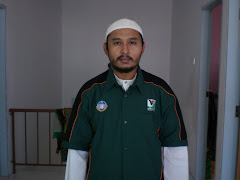
Kuatan Pahe Darul Makmur
pemakaian serban semsa menunaikan solat_InsyaAllah ada sawaaban anugerah Allah
Rempuh halangan
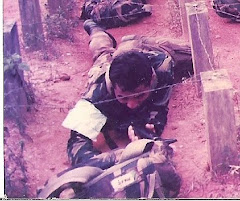
Abah_menyokong kuat oengajian Ijazah UPM

usia 39 tahun

usia 23 tahun_UPM
An_Namiru

Ijazah Pengurusan Hutan UPM
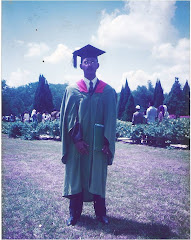
General Lumber_Nik Mahmud Nik Hasan

Chengal

Tauliah

Semasa tugas dgn general lumber

PALAPES UPM

UPM

Rumah yang lawa

Muhammad_Abdullah CD
semasa bermukim di Kuatan Pahe Darul Makmur
Ijazah

air terjun

Borneo land

GREEN PEACE
GREEN PEACE
Kelang

Ahlul Bayti_ Sayid Alawi Al Maliki

Asadu_ Tenang serta Berani

atTiflatul Falasthiniin

Sayid Muhammad Ahlul Bayt keturunan Rasulullah

AnNamiru_SAFARI_Kembara

AnNamiru_resting

Hamas

sabaha anNamiru fil nahri

Namir sedang membersih

Tok Guru Mualimul_Mursyid

An_Namiru
.jpg)
Namir_istirehat
.jpg)
SaaRa AnNamiru fil_Midan
.jpg)
Renungan Sang Harimau_Sabaha AnNamiru
.jpg)
Syaraba AnNamiru Ma_A
.jpg)
AnNamiru_Riadhah
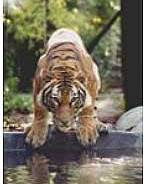.jpg)
AnNamiru_Riadhah
.jpg)
AnNimru ma_A waladuha
Namir fil_Ghabi (sebut Robi...
Namir

AdDubbu_Beruang di hutan

Amu Syahidan Wa La Tuba lil_A'duwwi

AsSyahid
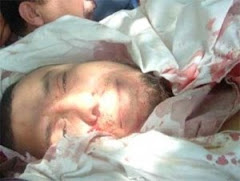
Namir

Tangkas
najwa dan irah

sungai

najwa

najwa

Kaabatul musyarrafah

unta

Jabal Rahmah

masjid nabawi

masjid quba

dr.eg

najwa dan hadhirah

along[macho]
![along[macho]](https://blogger.googleusercontent.com/img/b/R29vZ2xl/AVvXsEjuMi7D33CmR0_KXrCW2XigfLcUuQurcvtqOS139ncCwEzCyB-jUopk7QK7anADIenJEm2S0N6gAY1ubnACYXewgiAsI3rBjnLTawM39alLL-rEopOoVqn0w5WpLhPJH3hrXNtchEhgtyaI/s240/P7150023.JPG)
harissa dan hadhirah

adik beradik
Tongkat Ali

Tongkat Ali
herba kacip Fatimah

herba Kacip Fatimah
hempedu beruang

hempedu beruang
hempedu bumi

hempedu bumi
herba misai kucing

herba misai kucing
herba tongkat Ali
.png)
Tongkat Ali
Ulama'

Ulama'
kapal terbang milik kerajaan negara ini yang dipakai pemimpin negara

kapal terbang
Adakah Insan ini Syahid

Syahid
Tok Ayah Haji Ismail

Saifuddin bersama Zakaria

Dinner....
Sukacita Kedatangan Tetamu
Pengikut
Kalimah Yang Baik

Ubi Jaga

Ubi Jaga
Arkib Blog
Burung Lang Rajawali

Chinese Sparrowhawk
Kelicap Mayang Kelapa

Brown-Throated Sunbird
Kopiah

Pokok Damar Minyak

Kacip Fatimah
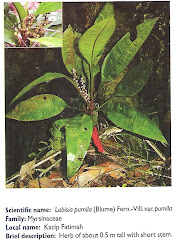
Mengkudu Akar



